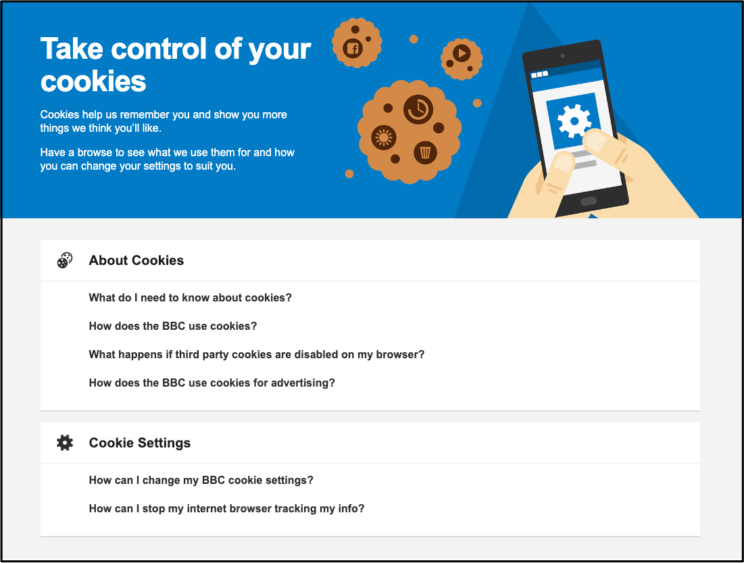
Echoes in the Algorithm: America’s Legends and the Digital Age’s ‘Cookie Policy’
America, a nation forged from diverse landscapes and peoples, is as much a tapestry of stories as it is of states. From the sun-baked deserts of the Southwest to the misty forests of the Pacific Northwest, and from the bustling metropolises to the quiet rural backroads, legends whisper. These aren’t just quaint folktales; they are the cultural bedrock, the collective unconscious of a vast continent, reflecting our deepest hopes, fears, and the enduring human need to make sense of the inexplicable. But in an age dominated by data, algorithms, and the ubiquitous "cookie policy," how do these ancient whispers resonate, and what new forms do they take?
At its heart, a legend is a form of cultural data – a story passed down, verified (or not) by collective memory, and shaping the way we perceive our world. In this sense, every legend carries its own implicit "cookie policy." When we engage with these stories, we implicitly agree to their terms: to suspend disbelief, to consider the possibility, and to allow them to influence our understanding of a place, a historical event, or even ourselves. These are the original "first-party cookies," generated and shared within the immediate community, shaping local identity and belief. But as these stories transcend their origins and enter the global digital stream, they encounter an entirely new set of "third-party cookies" – the algorithms that track our engagement, personalize our feeds, and subtly (or not so subtly) influence the narratives we consume.
Cryptids and the Unseen Guardians: The Raw Data of Fear and Wonder

No discussion of American legends is complete without venturing into the realm of cryptids – creatures whose existence remains unproven but whose stories persist with remarkable tenacity. These tales are potent "data points" reflecting humanity’s primal fear of the unknown and our fascination with the wilderness.
Perhaps the most famous of these is Bigfoot, or Sasquatch, an elusive, ape-like hominid said to roam the dense forests of the Pacific Northwest. First gaining widespread attention in the mid-20th century, sightings and blurry photographs, like the infamous 1967 Patterson-Gimlin film, have fueled a dedicated community of believers and researchers. "The idea of a large, unknown primate living in our backyard," notes cryptozoologist Loren Coleman, "taps into something very deep within us – the mystery of the wild, and perhaps, a hidden part of ourselves." The Bigfoot legend, in its digital iteration, is a masterclass in crowdsourced data collection. Every grainy photo, every purported footprint cast, every eyewitness account shared on forums or YouTube, becomes a new data point, scrutinized and debated, forming a decentralized "database" of the unexplained. This digital proliferation acts like a persistent "tracking cookie," keeping the legend alive and ensuring its constant reappearance in our collective consciousness.
Further east, in the desolate Pine Barrens of New Jersey, lurks the Jersey Devil, also known as the Leeds Devil. This creature, often described as a winged, horse-headed biped with leathery bat-like wings and glowing red eyes, has terrified residents for over 250 years. Its origin story, a chilling tale of a cursed birth in 1735, speaks to the anxieties surrounding poverty, morality, and the fears of a harsh, untamed environment. The Jersey Devil’s story is a "geo-located cookie" – deeply tied to a specific region, its lore woven into the very fabric of local identity, warning outsiders and solidifying community bonds. Its continued presence in local lore and occasional "sightings" remind us that some data points, no matter how old, refuse to be purged.
Then there’s the Mothman of Point Pleasant, West Virginia, a legend born from a flurry of sightings in 1966-1967, culminating tragically with the collapse of the Silver Bridge. Described as a large, winged humanoid with glowing red eyes, the Mothman became an ominous harbinger, a "data alert" for impending disaster. Its story gained global traction through books and films, transforming a localized cryptid into a symbol of unexplained phenomena and prophetic dread. The Mothman legend exemplifies how an initial burst of local "data" (eyewitness accounts) can be amplified and reinterpreted by external "third-party platforms" (media, entertainment industry), leading to a broader, more generalized understanding of its implications.
Folk Heroes and the Fabric of National Identity: Curated Cultural Data
Beyond the terrifying and the mysterious, America’s legends also celebrate the extraordinary human spirit. These folk heroes, often larger than life, embody the values, aspirations, and struggles of the nation’s formative years. They are the carefully curated "first-party data" that a nation shares about itself, reflecting its ideals and collective memory.
Paul Bunyan, the gargantuan lumberjack and his blue ox, Babe, are synonymous with the colossal task of taming the American wilderness. His tales, originating in the logging camps of the late 19th and early 20th centuries, describe him carving out rivers, flattening mountains, and creating entire landscapes with a swing of his axe. Bunyan is more than just a strong man; he represents American ingenuity, resilience, and the relentless drive to conquer nature. "Paul Bunyan is a myth of American progress," states folklorist Richard Dorson, "a testament to the power of human endeavor in a vast, untamed land." His stories, often told around campfires, were the original "viral content," spreading rapidly through a specific demographic, building camaraderie and reinforcing a shared sense of purpose.
Similarly, John Henry, the "steel-driving man," embodies the epic struggle of man against machine. This African American folk hero, said to have worked on railroad construction in the post-Civil War era, famously raced a steam-powered hammer and won, only to die from exhaustion. John Henry’s legend is a poignant "data point" on the human cost of industrialization and a powerful symbol of dignity, perseverance, and resistance against technological subjugation. His story, often passed down through song, functions as an emotional "cookie," leaving a lasting imprint on the listener about the value of human labor and spirit.

Then there’s Johnny Appleseed, born John Chapman, a real historical figure transformed into a legend. For decades, he traveled across the Midwest, planting apple seeds and establishing nurseries, fueled by a spiritual conviction. His legend, steeped in environmentalism and generosity, paints him as a gentle pioneer, sharing his bounty with settlers and Native Americans alike. Johnny Appleseed’s story is an early example of "positive data dissemination," promoting ideals of stewardship and community building, his actions leaving a tangible, edible legacy.
The Digital Transformation: Legends in the Age of Cookies
The digital age has fundamentally altered how legends are born, shared, and consumed. The internet is the ultimate "third-party cookie provider," tracking our interests, shaping our perceptions, and creating new feedback loops for storytelling. Legends no longer rely solely on oral tradition or print; they thrive in the immediate, interconnected world of forums, social media, and creepypastas.
Consider Slenderman, a character born on an internet forum in 2009. This tall, faceless figure in a black suit, who stalks and traumatizes children, quickly went "viral." His story, meticulously crafted and expanded upon by countless users, demonstrates how collective digital authorship can create a compelling, genuinely terrifying modern myth. Slenderman’s rapid spread and evolution is a direct result of the internet’s "cookie policy" in action: user engagement (clicks, shares, comments) drives visibility, leading to personalization (each user’s interpretation) and rapid iteration. The line between fiction and reality blurs as the legend becomes a "persistent cookie" in the digital realm, influencing not just our entertainment but, in some tragic cases, real-world actions.
This digital transformation presents both opportunities and challenges. On one hand, it democratizes storytelling, allowing niche legends to find global audiences and new myths to emerge organically. On the other hand, the sheer volume of information, combined with the lack of traditional gatekeepers, makes it harder to discern authenticity. Every click, every share, every comment on a story about a haunted house or a cryptid sighting contributes to its "engagement data," potentially pushing it higher in an algorithmically sorted feed. The "cookie policy" here is less about explicit consent and more about passive data collection, where our online behaviors dictate which legends we encounter and how often.
The Implicit "Cookie Policy" of Belief
Ultimately, the legends of America, whether ancient or modern, cryptid or heroic, serve a vital function: they help us process our world. They offer frameworks for understanding the inexplicable, for celebrating virtues, and for confronting our deepest fears. In an increasingly complex and interconnected world, these stories act as cultural "data packets," carrying information about our past, our values, and our evolving relationship with the unknown.
The explicit "cookie policy" of the digital age demands transparency about how our data is collected, used, and shared. Perhaps, in a metaphorical sense, we should apply a similar lens to the legends we consume. Do we understand their origins? Are we aware of how they’ve been altered or amplified by various "third-party platforms" (be it media, popular culture, or the internet)? Do we "consent" to the narratives they offer, or are we passively accepting the "data" that algorithms and cultural currents feed us?
From the spectral glow of the Mothman’s eyes to the mighty swing of Paul Bunyan’s axe, America’s legends are more than just stories; they are living, evolving data streams. They persist because they speak to universal human experiences, connecting us to a past that, even if mythical, feels deeply real. As we navigate an increasingly digital landscape, these echoes in the algorithm remind us that while the medium of storytelling may change, the fundamental human need for narrative, for meaning, and for a good, compelling legend, remains an unchangeable truth. And in that enduring need, perhaps, lies the most fundamental "cookie policy" of all – the implicit agreement to let stories, in all their forms, continue to shape our world.


